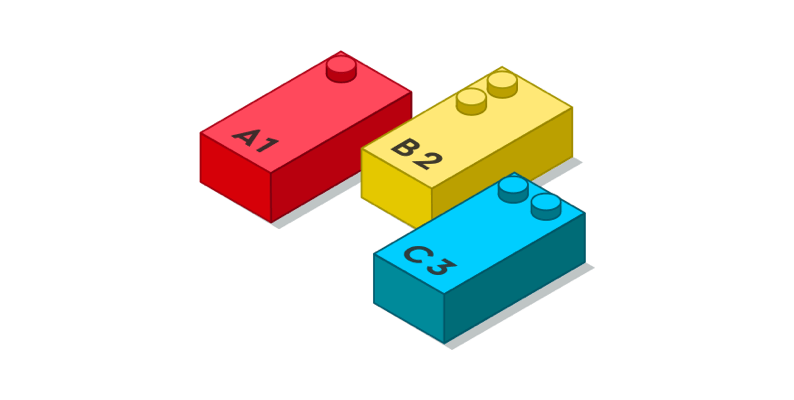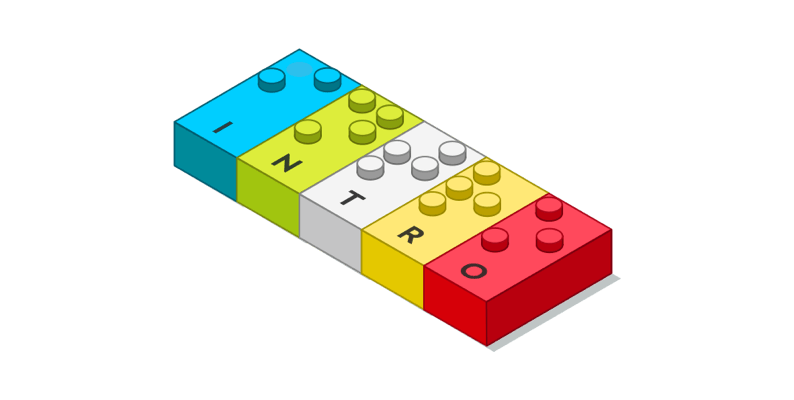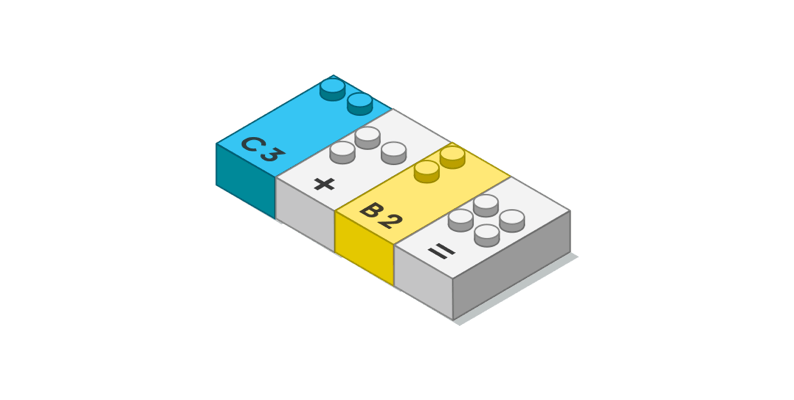Fence
Model geometric relationships with bricks on a base plate. Plan and build a fence around the cows.
Let's play!
Pick 3 bricks from the bowl to be the cows.
Place the cow bricks in the center of the base plate.
Build the smallest rectangular shaped fence possible to surround the cows.
How to prepare
1 base plate
3 letter "C" bricks
All the other bricks
1 bowl
Place 3 letter "C" bricks in the bowl.
Facilitation tips
Suggest building a square fence and compare capacity.
Ask "What happens if the gate is left open ?"
Suggest "The 3 bricks are not cows and the other bricks are not a fence. What else could they be?".
Possible variations
Suggest building a square fence.
Use a pre-determined amount of bricks for building the fence.
Add mandatory rules : cows cannot touch the fence; cows cannot touch each other …
Peer play : one player places the cows, the other builds the fence.
Download & print
Children will develop these holistic skills
cognitive skills
- Practice scientific and technological approaches: Utilize appropriate tools and methods
physical skills
- Recognize real situations that can be modeled by geometric relationships (alignment, parallelism, perpendicularity, symmetry)
social skills
- Articulate and justify answers, arguments and opinions
emotional skills
- Understand rules
creative skills
- Retell or create simple stories
Did you know?
Well-designed games can lead to literacy and numeracy skills.
What the students feel and think matters: they must get the feeling that they are part of their own learning and mastery of the content. Use open ended and guiding question techniques to support and encourage them.
Share this activity
0 people like this activity
Comments
Please be reminded of our community guidelines
to comment on this activity
0 comments to this activity
Login to post your comment!
Login to your existing profile or create a new profile in order to leave a comment on this activity.
Braille activity groups

LEGO® Braille Bricks activities: CHARACTERS
Learn braille letters, numbers, mathematic symbols and punctuation signs and know how to read and write them.

LEGO® Braille Bricks activities: LITERACY
Assemble characters brick by brick and play with words in order to develop the ability to read and write.

LEGO® Braille Bricks activities: NUMERACY
Assemble characters, play with numbers and develop the ability to do basic mathematics and geometry.
Quick activity finder
Pre-braille activities
Braille activities